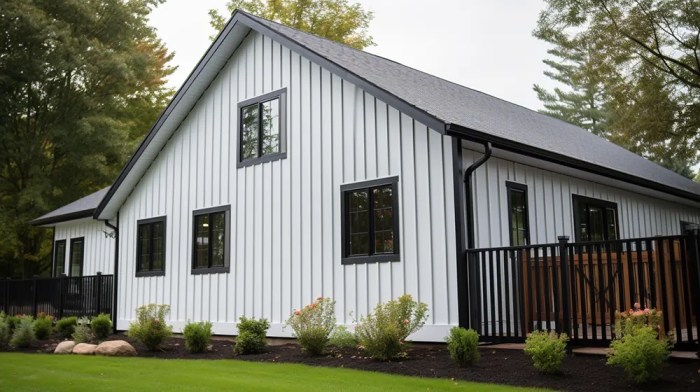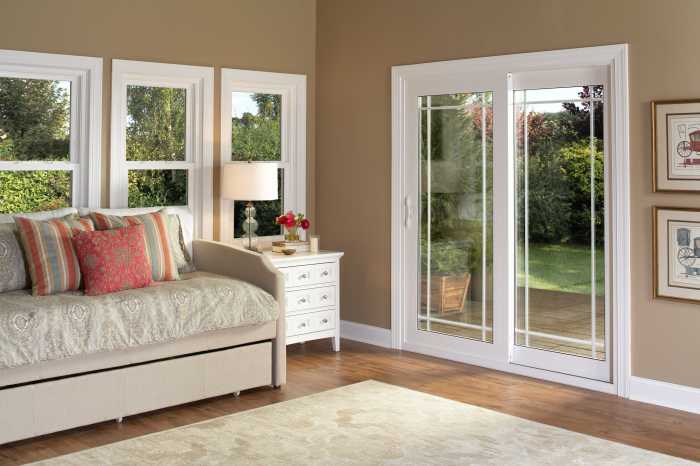Crafting a Timeless Look: The Beauty of a Natural Wood Siding House
Embracing the charm of a natural wood siding house opens the door to a world where elegance meets sustainability. From the warm hues of cedar to the rich texture of redwood, each type of wood adds a unique character to the facade of a home.
Let's delve into the allure and practicality of choosing natural wood siding for your house.
Natural wood siding is more than just a design choice; it's a statement of craftsmanship and eco-conscious living. In this guide, we will explore the various aspects of natural wood siding, from its environmental impact to the visual appeal it brings to a home.
Introduction to Natural Wood Siding House
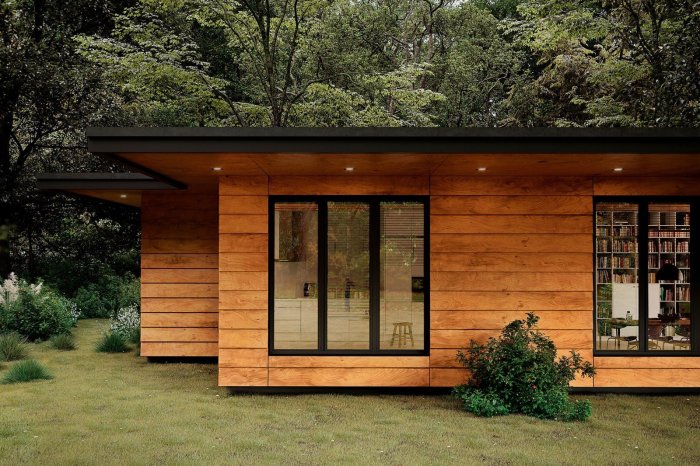
Natural wood siding refers to the exterior cladding of a house made from real wood materials, such as cedar, pine, or redwood. This traditional form of siding adds a warm, rustic look to a home and is known for its durability and versatility.
There are several benefits of using natural wood siding for houses. Firstly, wood siding is a renewable resource, making it an environmentally friendly choice. Additionally, wood siding is easy to install, repair, and maintain, providing homeowners with a long-lasting and cost-effective option for their homes.
Types of Wood Commonly Used in Natural Wood Siding
- Cedar: Known for its natural resistance to insects and decay, cedar is a popular choice for wood siding due to its durability and beautiful grain patterns.
- Pine: Pine siding is affordable and widely available, making it a common choice for homeowners looking for a budget-friendly option.
- Redwood: Redwood siding is prized for its rich color and natural resistance to rot and decay, making it a premium choice for those seeking a high-end look.
Environmental Impact of Choosing Natural Wood Siding
Choosing natural wood siding for a house can have a positive environmental impact. Wood is a renewable resource, meaning it can be sustainably harvested without depleting forests. Additionally, wood siding requires minimal processing compared to other siding materials, reducing energy consumption and carbon emissions.
Design and Aesthetics
When it comes to the visual appeal of a natural wood siding house, the natural beauty and warmth of wood can add a timeless charm to any home. The texture and grain of the wood create a unique and inviting look that can complement various architectural styles.
Design Options with Natural Wood Siding
Natural wood siding offers a variety of design options to choose from, including horizontal clapboard, vertical board and batten, shingles, and more. Each style can create a different aesthetic, allowing homeowners to customize the look of their home according to their preferences.
Natural Wood Siding Enhancing Aesthetics
The use of natural wood siding can enhance the overall aesthetics of a house by adding depth, character, and a sense of warmth to the exterior. It can create a connection with nature and bring a touch of rustic elegance to the design.
Popular Color Choices
Popular color choices for natural wood siding include cedar, redwood, pine, and fir. These colors can range from light to dark tones, allowing homeowners to choose a shade that best complements the surrounding landscape or architectural style of the house.
Installation and Maintenance
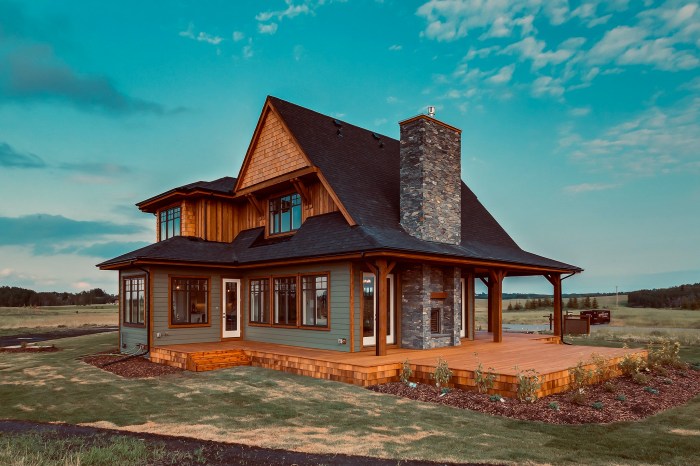
Installing natural wood siding on a house can be a rewarding process that adds warmth and character to the exterior. Here, we will detail the installation process, compare costs with other siding materials, discuss maintenance requirements, and share tips for prolonging the lifespan of natural wood siding.
Installation Process
- Prepare the surface by ensuring it is clean, dry, and free of any debris.
- Apply a weather-resistant barrier to protect the wood from moisture.
- Begin installing the siding from the bottom up, ensuring each piece overlaps the one below it.
- Use galvanized or stainless steel nails to secure the siding in place.
- Finish with proper sealing and staining to protect the wood from the elements.
Cost Comparison
- Natural wood siding tends to be more expensive upfront compared to vinyl or aluminum siding.
- However, the long-term durability and aesthetic value of wood siding can make it a worthwhile investment.
- Consider the maintenance costs and lifespan of each material when comparing overall costs.
Maintenance Requirements
- Regularly inspect the siding for any signs of damage, such as rot or insect infestations.
- Clean the siding with a gentle detergent and water to remove dirt and mildew buildup.
- Reapply sealant and stain every few years to protect the wood from UV rays and moisture.
- Trim trees and bushes near the siding to prevent damage from branches rubbing against the wood.
Tips for Prolonging Lifespan
- Ensure proper ventilation behind the siding to prevent moisture buildup.
- Avoid using high-pressure washers, as they can damage the wood fibers.
- Inspect and repair any damaged areas promptly to prevent further deterioration.
- Consider applying a fresh coat of stain or paint every few years to maintain the appearance and protection of the siding.
Durability and Weather Resistance
Natural wood siding is known for its durability and weather resistance, making it a popular choice for homes in various climates. Here are some key points to consider:
Durability in Different Climates
Natural wood siding can withstand different climates, including hot and humid conditions, as well as cold and wet environments. Proper installation and maintenance are essential to ensure longevity.
Performance in Extreme Weather Conditions
Natural wood siding performs well in extreme weather conditions, such as heavy rain, snow, and strong winds. However, it may require additional protection in areas prone to severe weather events.
Longevity Compared to Other Siding Materials
When properly maintained, natural wood siding can last for decades, outperforming many other siding materials. Regular inspections, repairs, and refinishing can help extend its lifespan significantly.
Protecting from Weather Damage
To protect natural wood siding from weather damage, it is crucial to apply a quality sealant or stain to create a barrier against moisture and UV rays. Regular cleaning and inspection can also help identify and address any issues before they escalate.
Closure
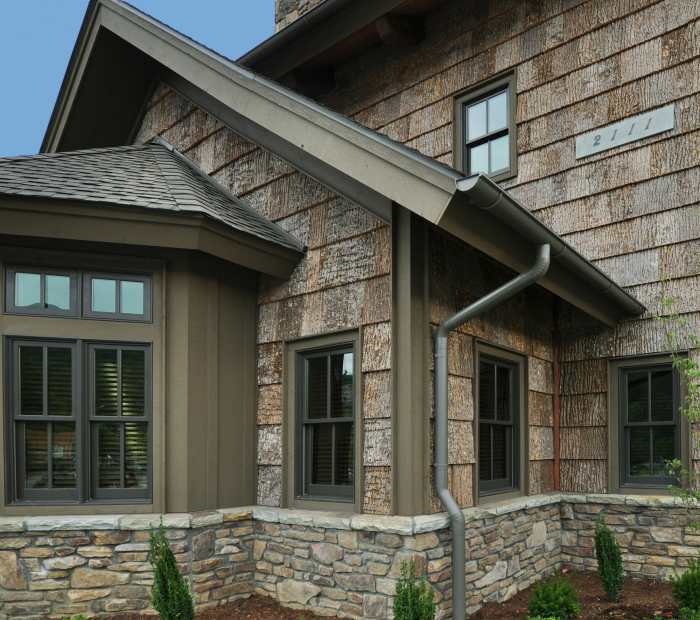
In conclusion, a natural wood siding house not only stands as a testament to the beauty of nature but also as a durable and sustainable choice for homeowners. Whether you opt for the timeless elegance of cedar or the rustic charm of pine, natural wood siding offers a versatile canvas for creating a home that exudes warmth and character.
Dive into the world of natural wood siding and elevate your home's exterior with a touch of natural beauty.
Answers to Common Questions
Is natural wood siding environmentally friendly?
Yes, natural wood siding is a sustainable choice as it is biodegradable and has a lower carbon footprint compared to other siding materials.
How often does natural wood siding need to be maintained?
Natural wood siding should be inspected annually and resealed or repainted every 3-7 years to maintain its integrity.
Can natural wood siding withstand harsh weather conditions?
With proper maintenance and protection, natural wood siding can withstand various weather conditions, but it may require more upkeep in extreme climates.
